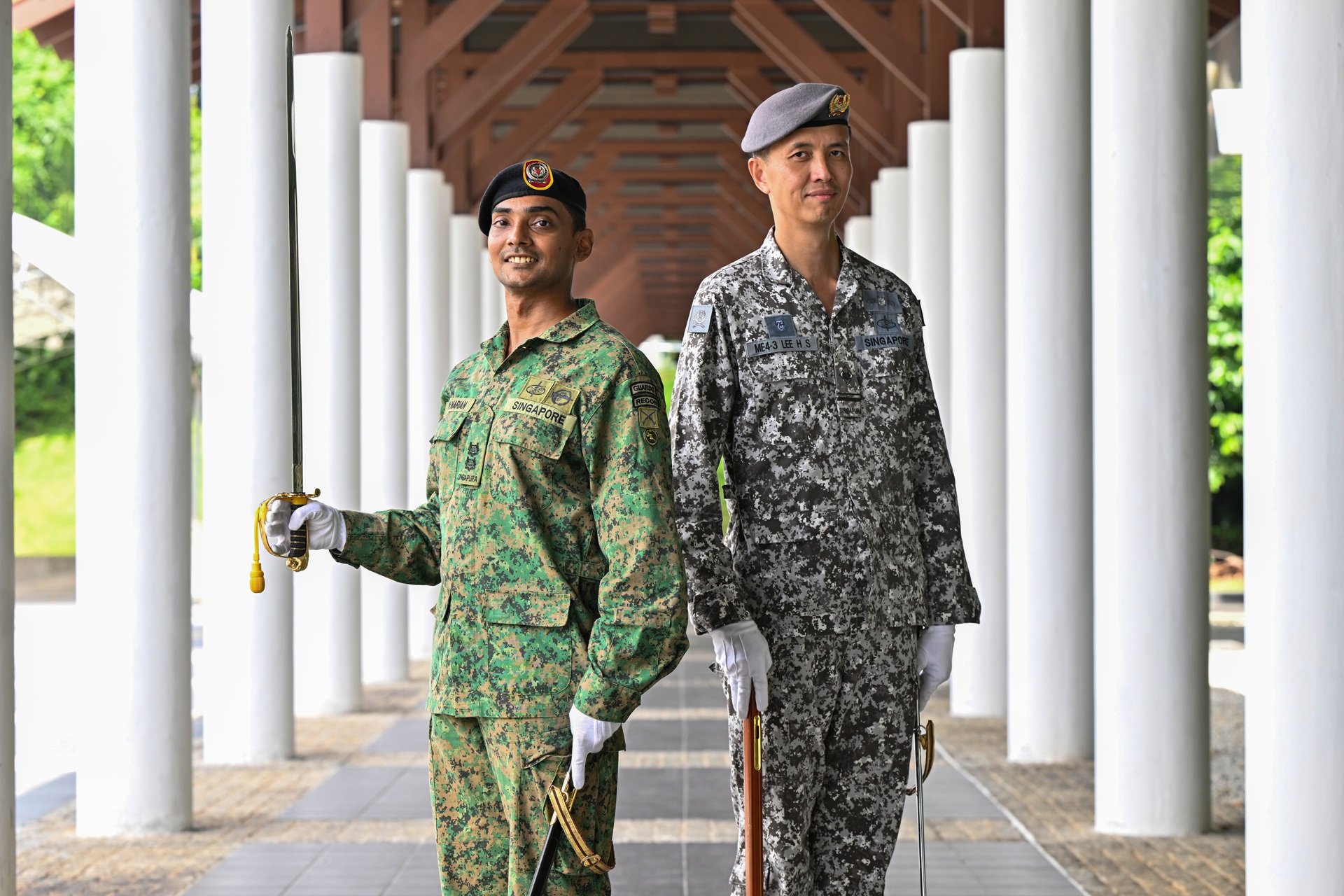I'VE GOT YOUR BACK
Certain military vocations require personnel to deal with not only physical stress, but also enormous mental demands. In the first of a three-part “Think Tough” series, PIONEER takes a closer look at the Weapon Systems Officer (Fighter).// Story Koh Eng Beng
// PHOTOS Kenneth Lin
“Another one, break left!” yells the Weapon Systems Officer (Fighter), or WSO (FTR). In split seconds, his partner — the pilot — veers their F-15SG fighter jet away from multiple surface-to-air missiles that were closing in on them.
After the immediate danger is over, the WSO (FTR) begins directing the air-to-ground strike mission from his rear position in the cockpit.
Using radar data and infrared images, he searches for the ground target while the pilot watches out for and fights off threats from the air. The WSO (FTR) then locks the precision bomb onto the target and gives the go-ahead for the pilot to drop the bomb.
This is a typical mission scenario for a Republic of Singapore Air Force (RSAF) WSO (FTR).
Bomber man
Some people might have the wrong impression that he’s the pilot’s sidekick. In fact, the WSO (FTR) shares the same flight responsibilities and serves as a navigator, bombardier, and an extra pair of eyes for the pilot.
He is also a tactician who plans the mission before flight. In the air, a WSO (FTR) directs the strike operation, and may take charge of a large group of fighter aircraft.
In an air-to-air mission — where aircraft from opposing sides square off — the WSO (FTR) takes on a defensive role. He looks out for enemy aircraft and surface-to-air missile threats from the ground. This allows the pilot to focus on taking down enemy aircraft.
And if necessary, a WSO (FTR) can fly the aircraft in the unlikely situation where the pilot is incapacitated.
Lieutenant (LTA) Yap Chuen Chin, an F-15SG WSO (FTR) from 149 Squadron, shares with PIONEER the challenges of his job:
What is the role of a WSO (FTR)?
The F-15SG’s sensors and avionics require a two-person team to maximise the aircraft’s potential, which allows us to do multiple targeting at the same time. The pilot can focus on the air-to-air fight, while the WSO (FTR) focuses on the ground targets.
How much data do you have to process when you’re up in the air?
At my seat, I am looking at multiple screens which show information from the radar, targeting pod, Heads-Up Display (HUD) repeater and datalink.
The radar can be used as an air-to-air radar to detect adversary aircraft, or as an air-to-ground radar to find ground targets. The targeting pod is like a giant camera which produces infrared images of ground targets.
The HUD repeater shows the pilot’s flight parameters such as altitude, air speed and bank angle, which I check to verify that he is flying the aircraft correctly.
Then, there is the datalink which allows aircraft to exchange tactical pictures.
Through the datalink, I can see if my formation members are in the correct position. If another aircraft spots an adversary on his radar, I am also able to see it from the datalink. This helps to build situational awareness for the whole formation.
Isn’t that a lot of information to handle?
There is a lot of data coming in at the same time from different sensors, so it’s critical for a WSO (FTR) to know what information he wants at any moment, and to sieve out and process the data.
And if I’m the flight lead for a mission, I also have to ensure that what we do is correct, and that the pilot is flying safely and keeping to plan. As a WSO (FTR) progresses to a more senior rank, he has to take charge of all aircraft in the formation.
How are you trained to deal with these mental demands?
In 2013, I attended a two-year overseas course with the United States Navy, where I learnt basic radar interpretation, intercepts, airmanship, as well as flying. I accumulated around 100 flight hours on their training jets.
Once I got my wings, I returned to Singapore and went for conversion training that allows me to operate on the F-15SG fighter aircraft. WSOs (FTR) also train overseas regularly in large-scale exercises. For example, I’ve participated in Exercise Cope Tiger in Thailand every year as well as Exercise Pitch Black in Australia.
What attributes should a WSO possess?
Resilience to face and overcome difficulties. You’ll be flying in a jet that goes beyond the speed of sound, so you have to be quick and accurate in decision-making. And of course, teamwork. As a WSO (FTR), you must work well with the pilot as well as other formation members.






.jpg?sfvrsn=b5383902_1)
.jpg?sfvrsn=4eb1b86e_1)


